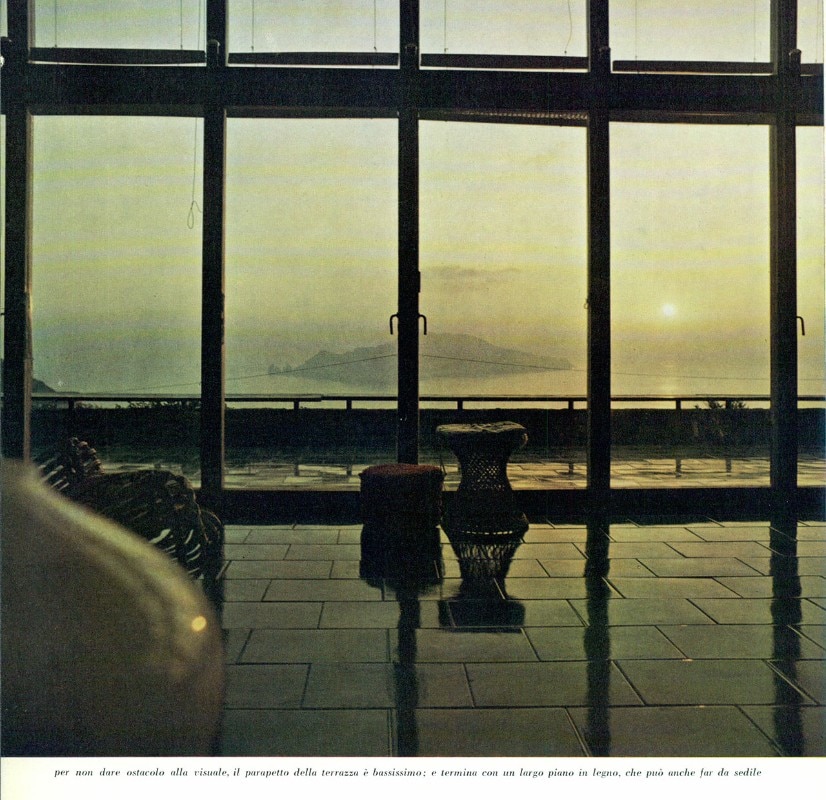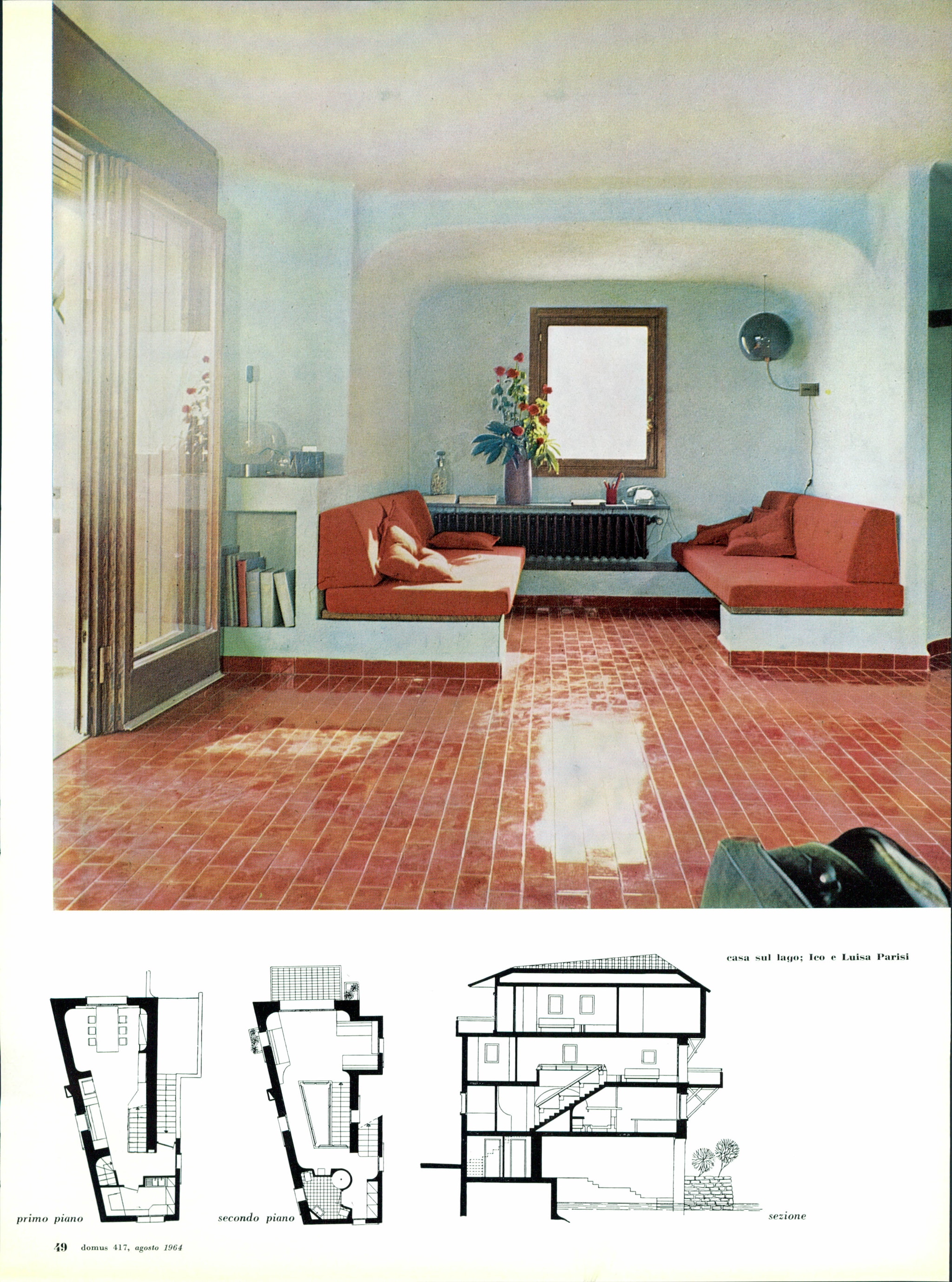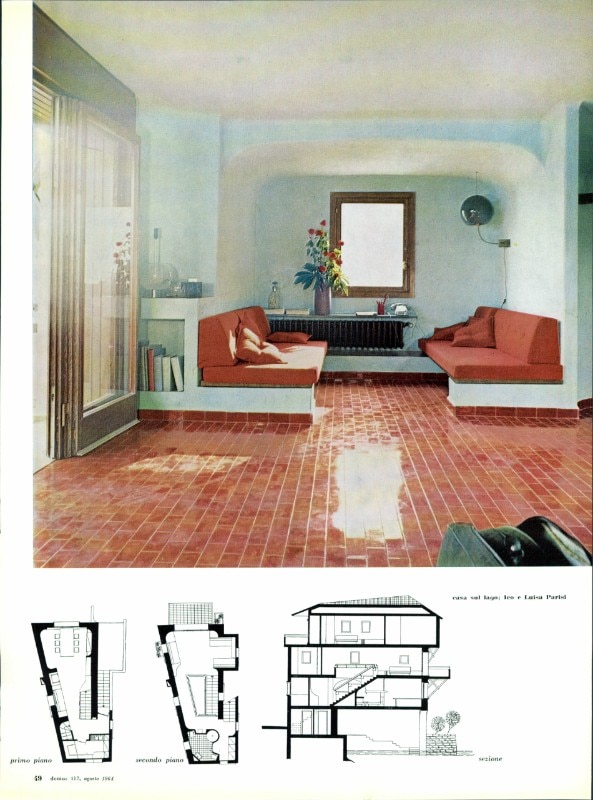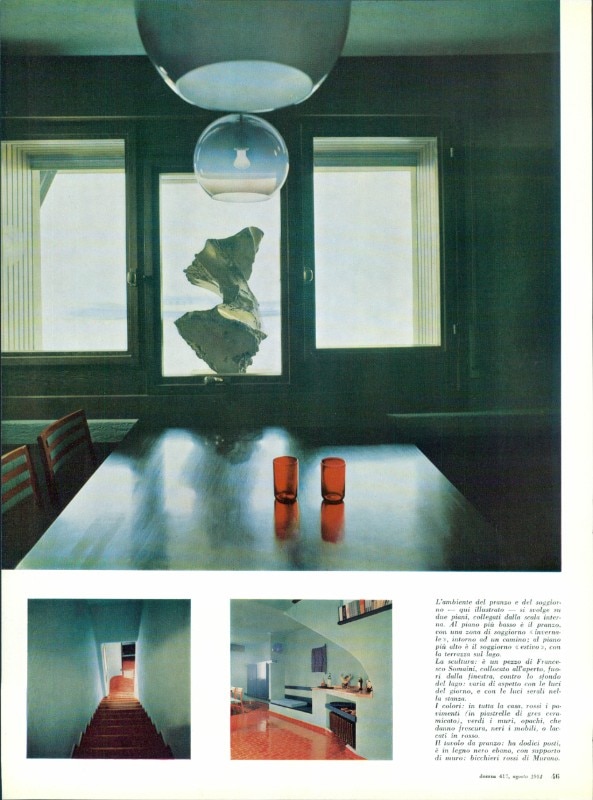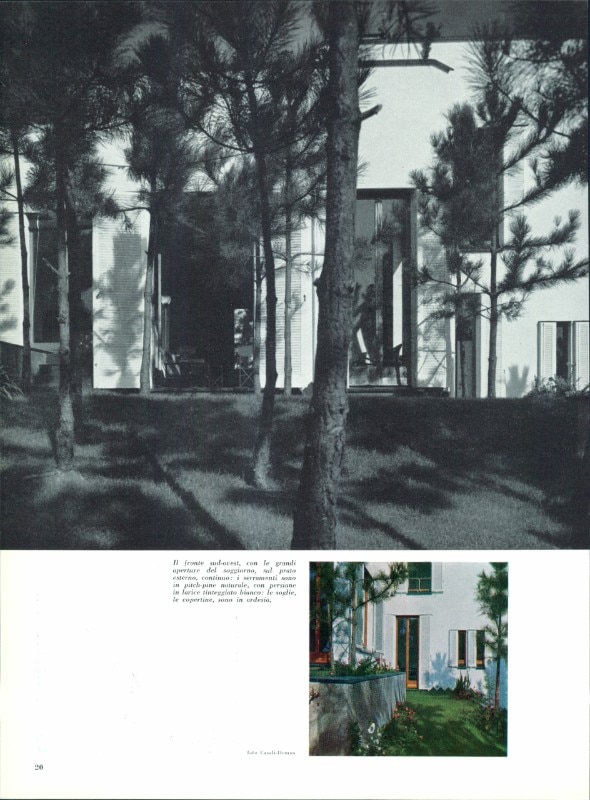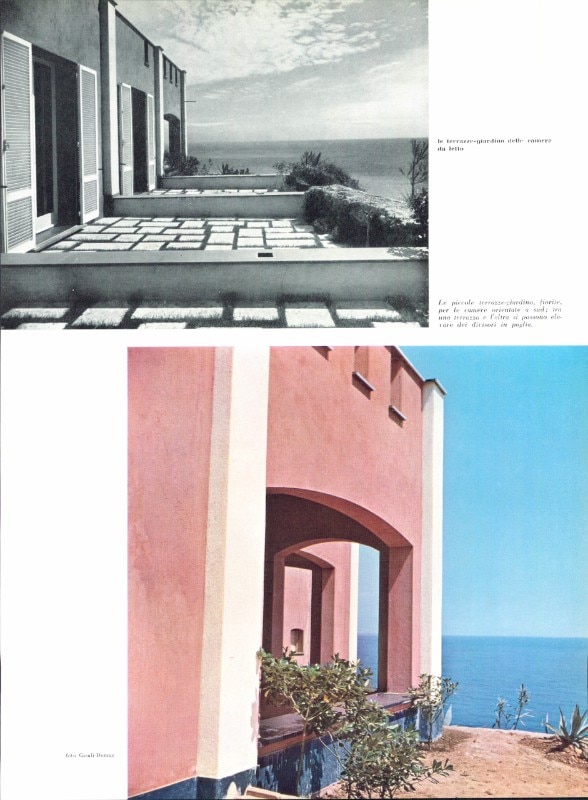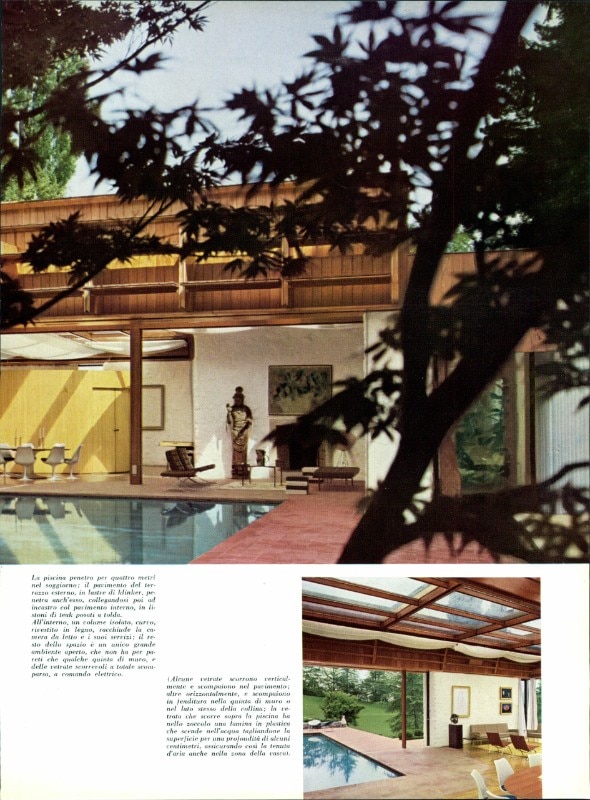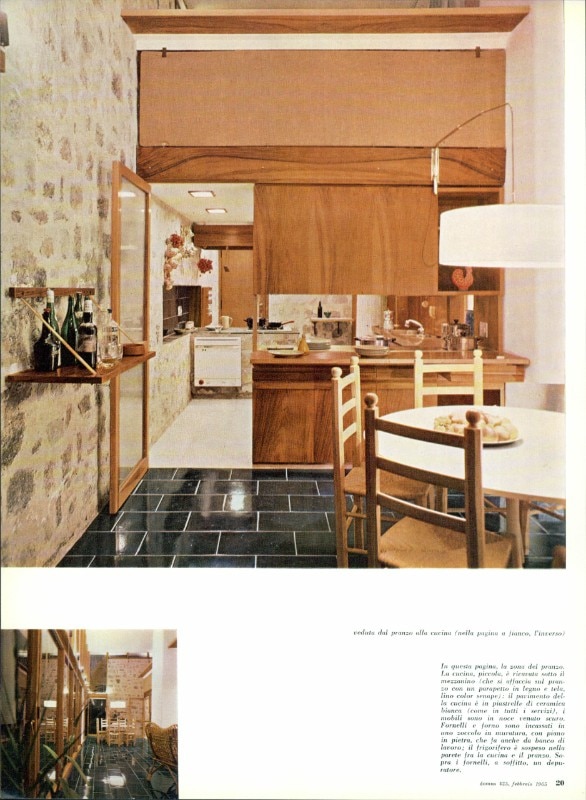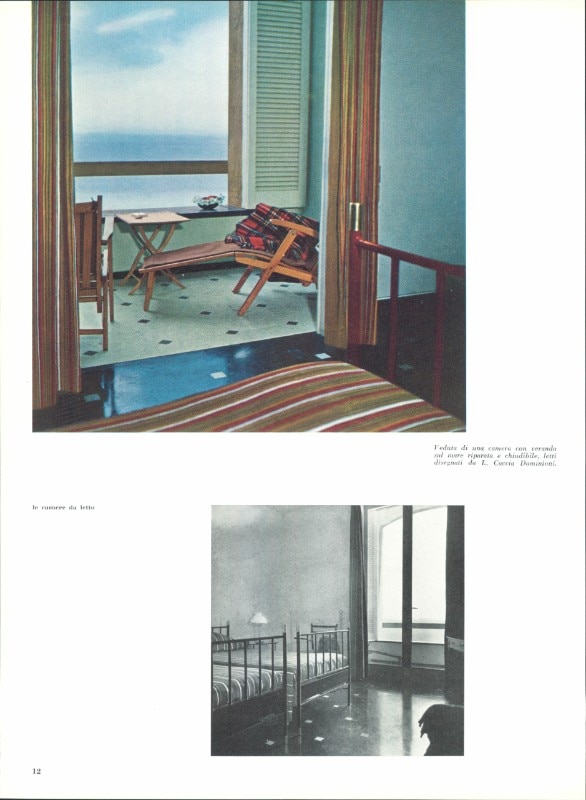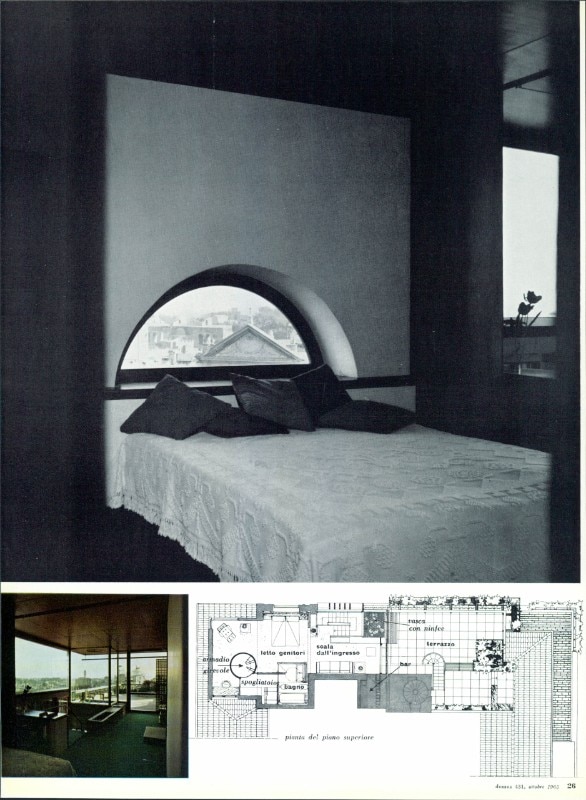The home as a holiday destination. A tradition that was consolidated in the Sixties, in the Italy of the economic boom, when Fellini’s Dolce Vita was showed in every cinema, Rome welcomed the Olympics, and the notes of the Beatles’ Love Me Do and the dreams of racial integration – I have a dream – were reaching Italy from the other side of the ocean. The decade of Aldo Moro’s government saw the inauguration of the Autostrada del Sole (Motorway of the Sun), which facilitated connections between north and south and gave a considerable boost to circulation in the peninsula and the construction of vacation houses, also called “second homes”.
In the Sixties, Domus focused on a number of projects that interpreted the modernity of homes lived in only a few periods of the year, which were “easy to maintain and to abandon” and responded to the need for flexibility, to accommodate large families, and where the landscape was the main guest and it was fully integrated into the home. Architects such as Bruno Morassutti, Ico and Luisa Parisi, Marco Zanuso and Ignazio Gardella renovated, arranged and designed buildings in which the landscape was habitable, too.
On the other hand, “holiday” architecture has always fascinated Domus and its director, Gio Ponti, who in the 1940s had already published many projects of sunny houses by the sea, with simple shapes inspired by the old spontaneous houses that characterize the landscapes of southern Italy and its islands, Greece, Portugal, and southern Spain. As Ponti said, they are “entirely habitable” houses which also allow you to inhabit the roof, with thick walls that keep the house cool and prevent moisture, and masonry interiors that are really easy to take care of. In the 1960s, this ancient construction wisdom translated into modern, practical and flexible holiday housing solutions. Habitable roofs, staircases, terraces, balconies and smart interior solutions contributed to enlarge and intensively use the spaces, just like it happens in ships.
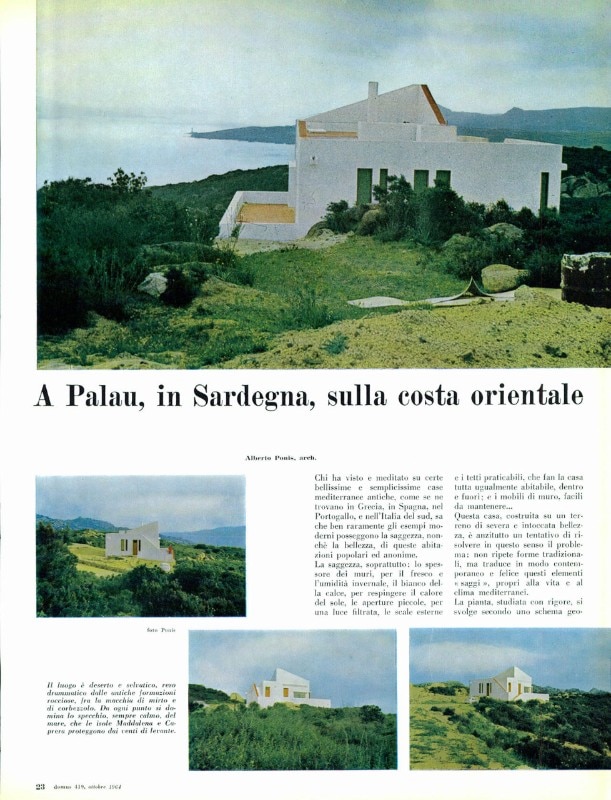
Alberto Ponis: “In Palau, Sardinia, on the eastern coast”
This is the case of the small villa in Palau designed by Alberto Ponis in the 1960s, during the period in which he worked on the eastern coast of Sardinia (Domus 419, October 1964). The house, entirely covered with white lime in order to repel the heat of the sun blends respectfully into the landscape, preserving the spectacular view of the Maddalena Archipelago and the island of Caprera. The house is entirely accessible: thanks to the stairs and external terraces you can access the roof, thus expanding the spaces. The masonry interiors develop around the fireplace, the fulcrum of domestic life. The passages between the entrances and the bedrooms are designed for the fluid nature of summer days: the surface of the fireplace serves as a table, while the dining table is a masonry that separates the living room and kitchen, also allowing to pass the food from a room to another. The house is ready to be lived in, the guests only need to add a few colorful mattresses and pillows. The large windows in the living room let the landscape enter the home, while in the most exposed rooms the openings are narrow slits that let the air circulate in a natural way.
Studio “La Ruota” by Ico and Luisa Parisi: “A house on the lake for winter and summer stays”
“Red and green are the main colors of home, waving with the flag on the terrace, as a holiday sign” (Domus 417, July 1964). Ico and Luisa Parisi focused on colors to renovate the interior of a house on the dock overlooking a small port, and adapted it to accommodate a large family and its guests on weekends. They didn’t interven on the exterior, as to respect the existing architecture, while they redesigned the interior with a free system that uses the three small floors to play with stairs, terraces and balconies, ensuring movement and continuity to the narrow spaces. Depending on the season, the meeting points revolve around the fireplace or the terrace on the lake, a real summer destination. Books are collected around the stairs’ parapet, so that they can be picked up or left without cluttering the house, while the attic is designed for children, who can access it thanks to a ladder located between the walls. The lamps are made, like the furnishings, of masonry, a simple and functional material; the red finishes link the fragmented rooms. The Parisi family had fun adding some surprising solutions, like a sculpture outside a small window: the window is the frame and the ever-changing landscape is the background.
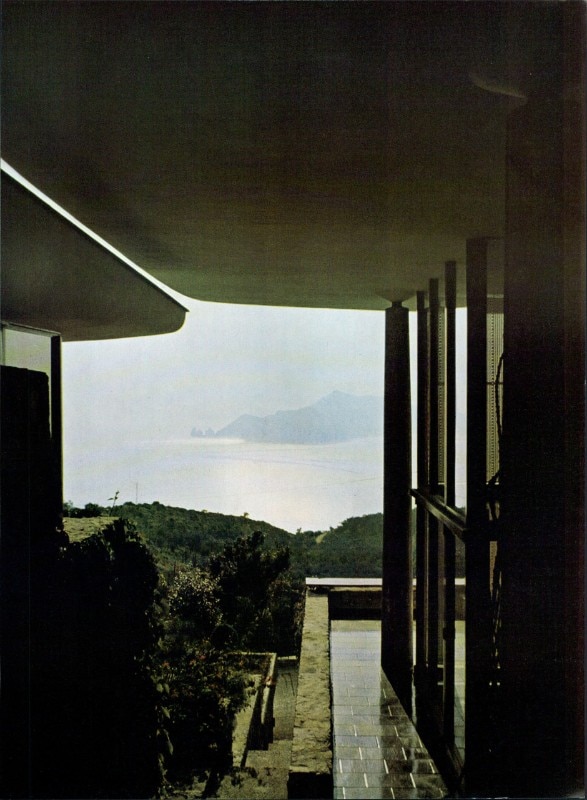
Bruno Morassutti: “A house without walls, under two rib vaults”
The island of Capri enters the home through the living room window, and the light of the Sorrento sea vibrates in the interior of the wall-less house designed by Bruno Morassutti (Domus 423, February 1965). A transparent house, to “experience the panorama”, built on concrete columns and covered by two rib vaults. The absence of internal diaphragms allows the continuous circulation of air: the environment is naturally refreshed and the glazed ceramic tiles continue outwards, almost touching the sea. The living space is distributed over two nearby units, separated by a stone staircase: the guests are accommodated in the smaller, independent unit, but the common moments are experienced in the shady outdoor living room, where the two rib vaults meet. In the small kitchen, oven and stove are embedded in a masonry plinth, and the stone top serves as a workbench, in order to prepare the meals with the guests.
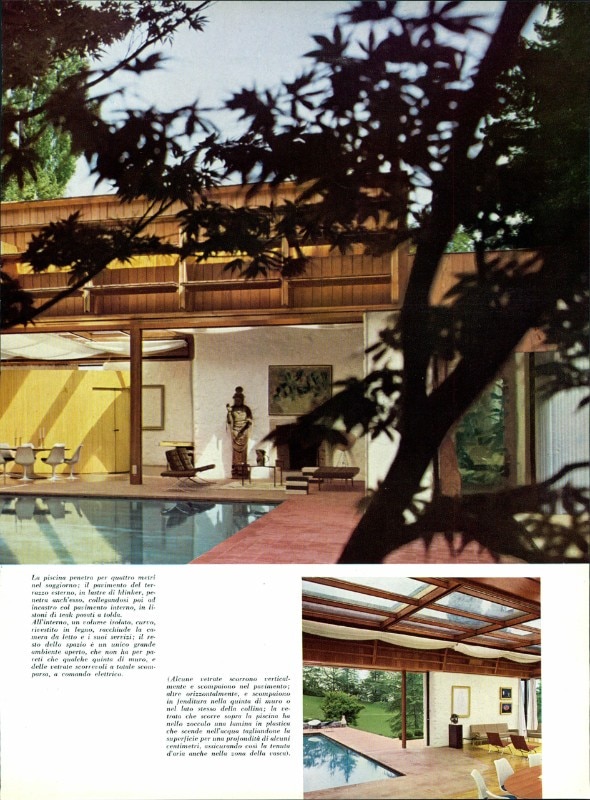
Amedeo Albertini: “A stay in a park, on Turin’s hills”
There are those who like to break away from the rustic and the vernacular style, and commission a quiet refuge to escape from the city, without having to sacrifice comfort and privacy. This is the case of the wood-and-crystal pavilion designed by Amedeo Albertini next to a swimming pool, on the hills around Turin (Domus 383, October 1961). A well-equipped living room inside a park; the owner wanted to have his collections of contemporary art and modern furniture even next to the pool. The pavilion is an apparently simple architecture, hiding complex and secret installations to cover and isolate part of the pool, which then enters the living room. The bathroom and bedroom are hidden in a large wooden cabinet, which also includes a small yacht-like kitchen for a quick meal. With a click, the walls disappear, and the bedroom is uncovered: the garden enters the house and the sky is the ceiling. The temperature-controlled saltwater pool and backlit walls complete this solitary gem.
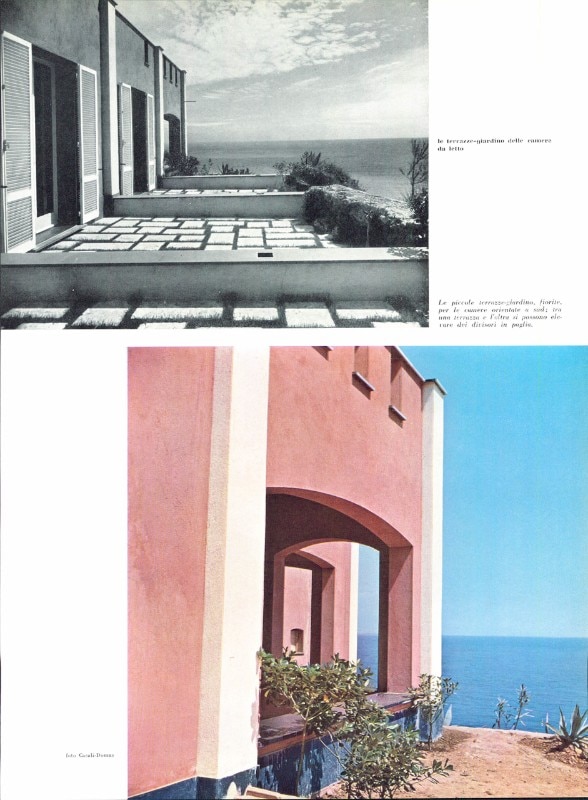
Ignazio Gardella and Marco Zanuso: “Hotel in Capo San Martino”
Marco Zanuso and Ignazio Gardella reinterpreted the language of vernacular architecture in the holiday complex of Capo San Martino, in the pine forest on the Gulf of Genoa, in Arenzano (Domus 344, July 1958). It is a small holiday town, the first part of which was completed in 1958. The structures – a hotel, a restaurant and a nightclub – are built with local materials, such as the roofs of the parapets in Lavagna stone or the floors in Finale stone, and they follow the promontory, distributing themselves on several levels through arcades and flat roofs. Here there are also two saltwater swimming pools, trampolines and spaces to dine outside, which are part of the search for habitability that involves all parts of the holiday home. “This eventful architecture creates a landscape within the landscape: walls, views, openings are designed to “frame” and “surprise” the views on the sea, and not to be invaded by it”, comments Domus, in July 1958.
Opening image: Bruno Morassutti, A house without walls, under two rib vaults. Caption: “As not to obstruct the view, the parapet of the terrace is very low and ends with a large wooden top that can also be used as a seat”, in Domus 423, February 1965 (inside page, Photo Casali Domus)


